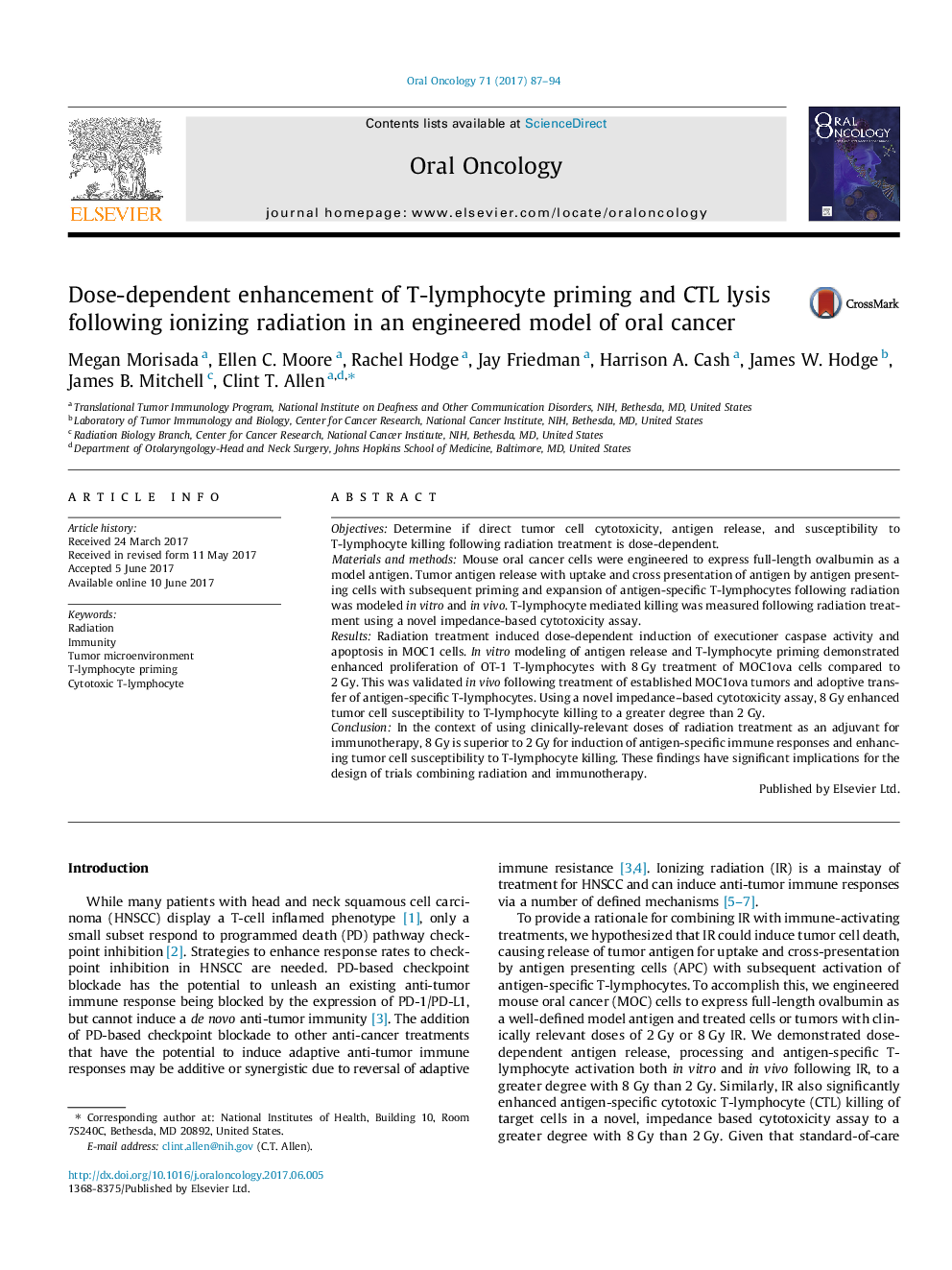| کد مقاله | کد نشریه | سال انتشار | مقاله انگلیسی | نسخه تمام متن |
|---|---|---|---|---|
| 5642644 | 1586239 | 2017 | 8 صفحه PDF | دانلود رایگان |

- Ionizing radiation (IR) induces apoptosis in a dose-dependent fashion.
- 8Â Gy IR induces release of tumor antigen to a greater degree than 2Â Gy.
- 8Â Gy IR induces T-cell priming in vitro to a greater degree than 2Â Gy.
- 8Â Gy IR induces T-cell priming in peripheral and tumor compartments in vivo.
- Higher single doses of IR should be considered when combining IR and immunotherapy.
ObjectivesDetermine if direct tumor cell cytotoxicity, antigen release, and susceptibility to T-lymphocyte killing following radiation treatment is dose-dependent.Materials and methodsMouse oral cancer cells were engineered to express full-length ovalbumin as a model antigen. Tumor antigen release with uptake and cross presentation of antigen by antigen presenting cells with subsequent priming and expansion of antigen-specific T-lymphocytes following radiation was modeled in vitro and in vivo. T-lymphocyte mediated killing was measured following radiation treatment using a novel impedance-based cytotoxicity assay.ResultsRadiation treatment induced dose-dependent induction of executioner caspase activity and apoptosis in MOC1 cells. In vitro modeling of antigen release and T-lymphocyte priming demonstrated enhanced proliferation of OT-1 T-lymphocytes with 8Â Gy treatment of MOC1ova cells compared to 2Â Gy. This was validated in vivo following treatment of established MOC1ova tumors and adoptive transfer of antigen-specific T-lymphocytes. Using a novel impedance-based cytotoxicity assay, 8Â Gy enhanced tumor cell susceptibility to T-lymphocyte killing to a greater degree than 2Â Gy.ConclusionIn the context of using clinically-relevant doses of radiation treatment as an adjuvant for immunotherapy, 8Â Gy is superior to 2Â Gy for induction of antigen-specific immune responses and enhancing tumor cell susceptibility to T-lymphocyte killing. These findings have significant implications for the design of trials combining radiation and immunotherapy.
Journal: Oral Oncology - Volume 71, August 2017, Pages 87-94